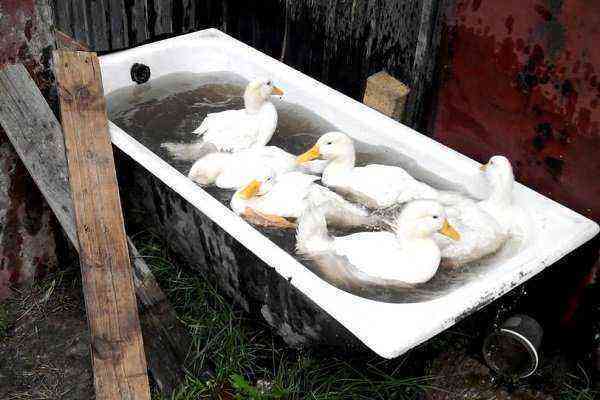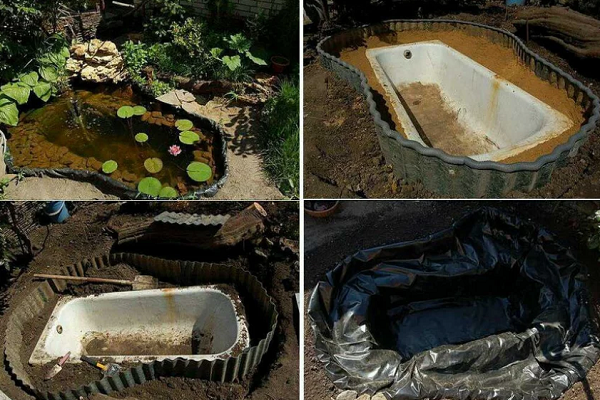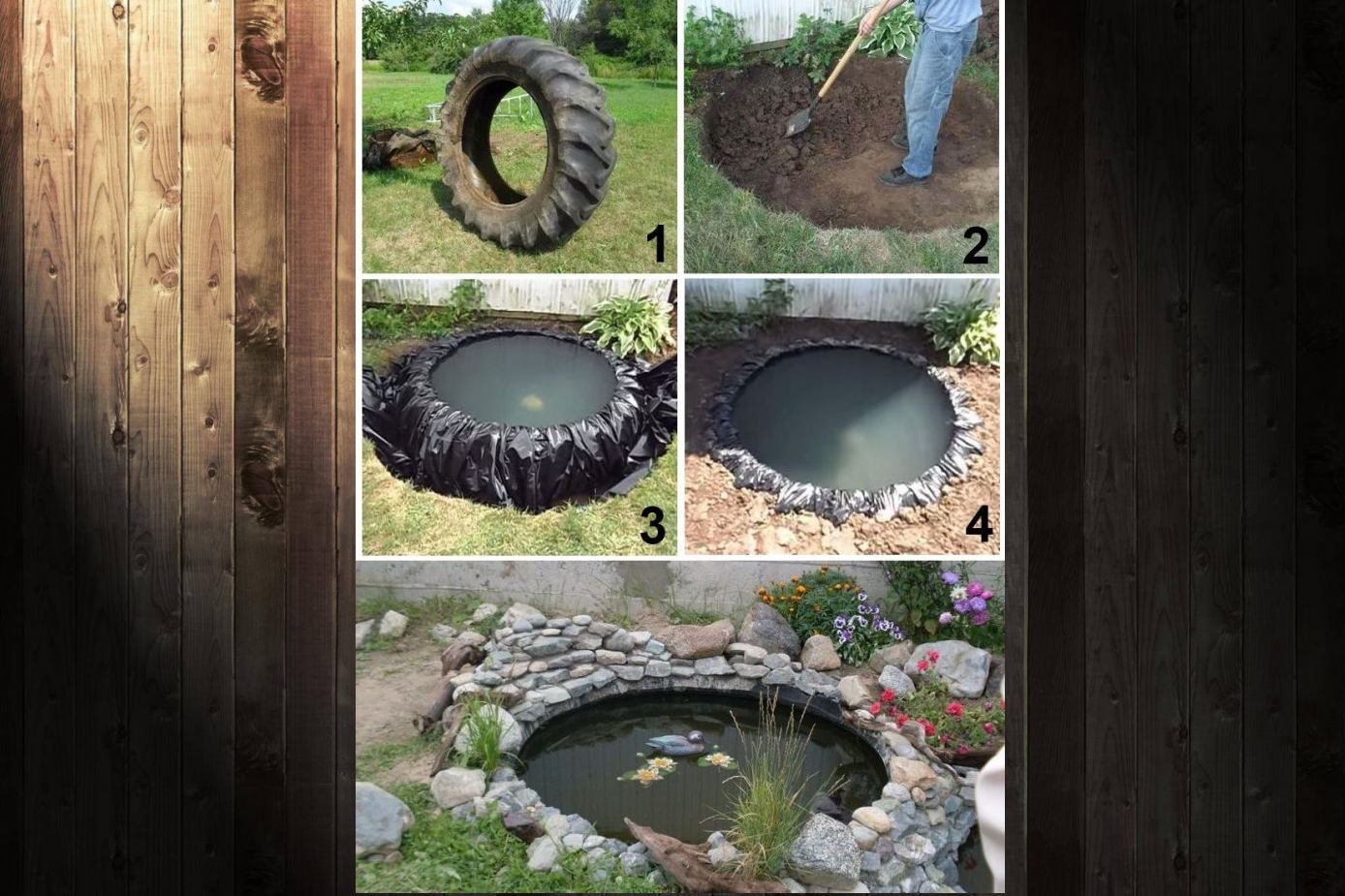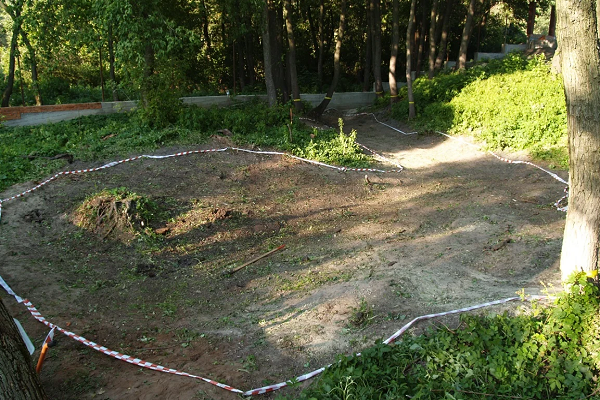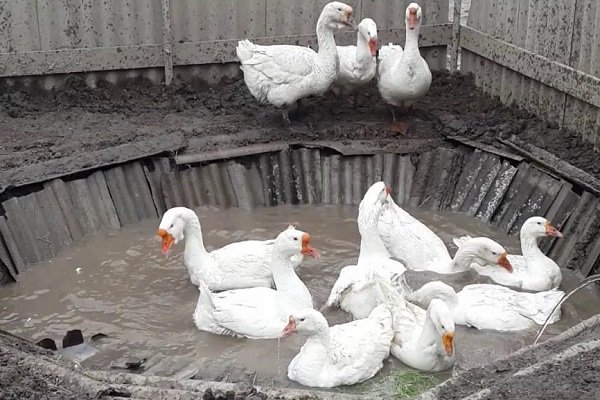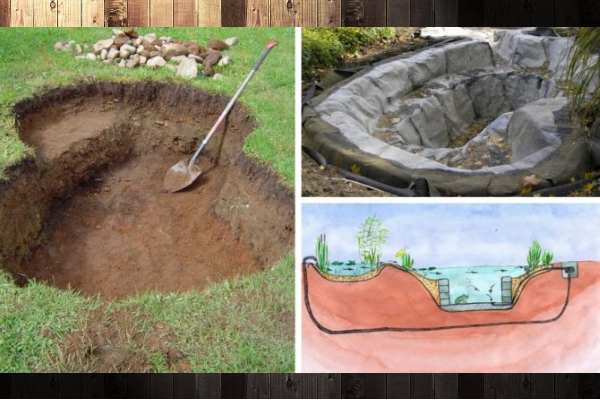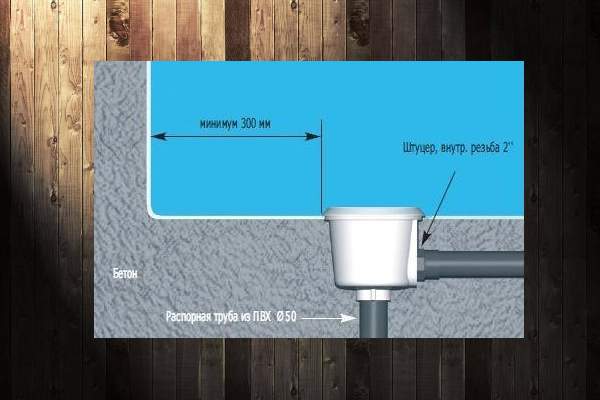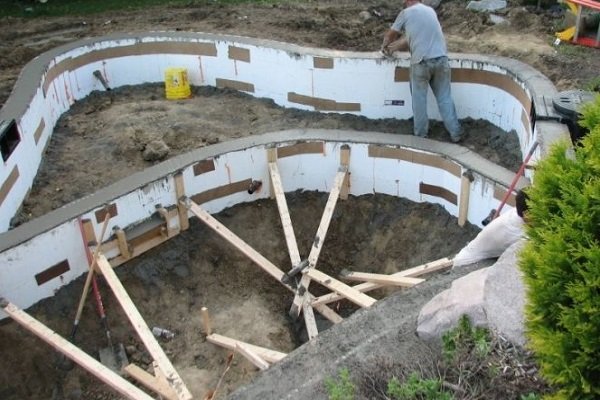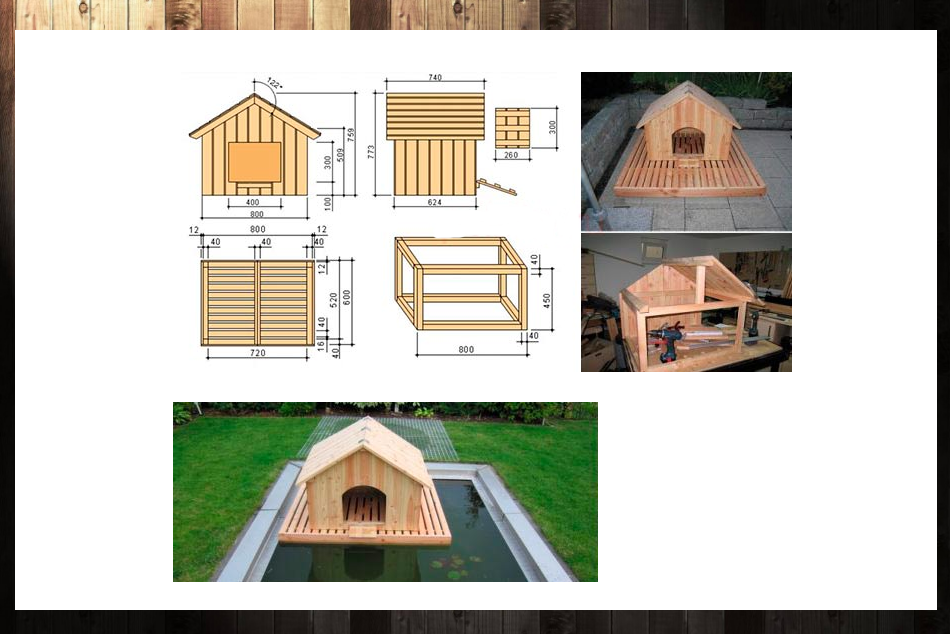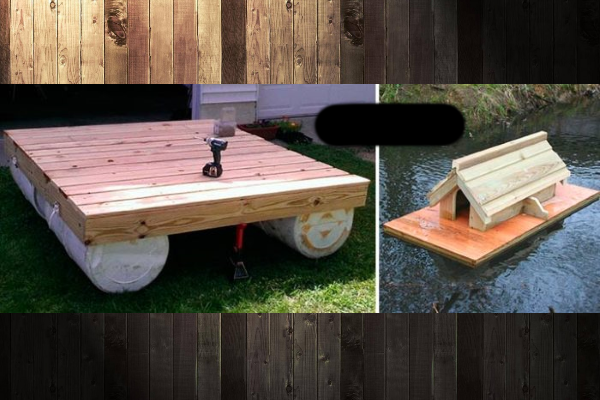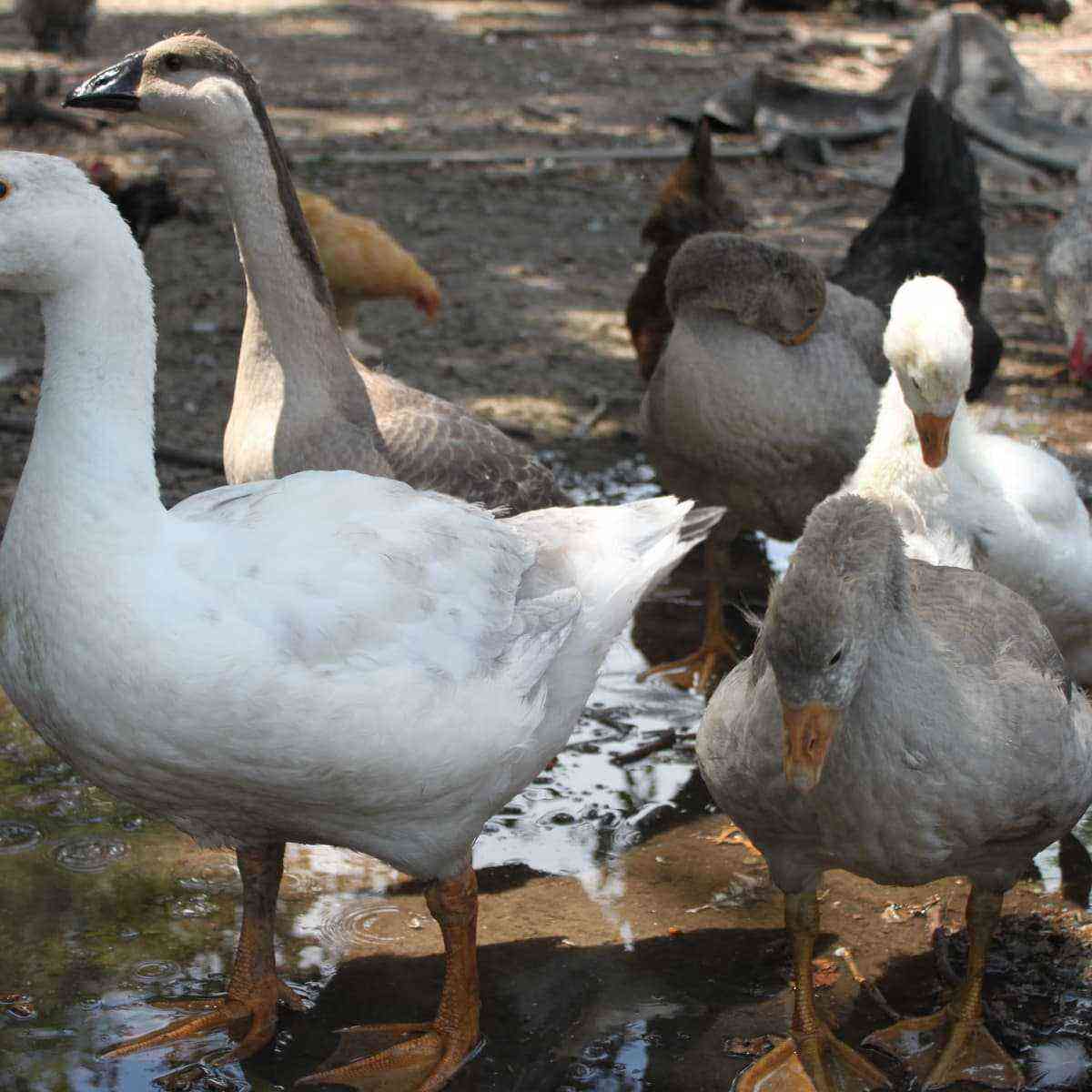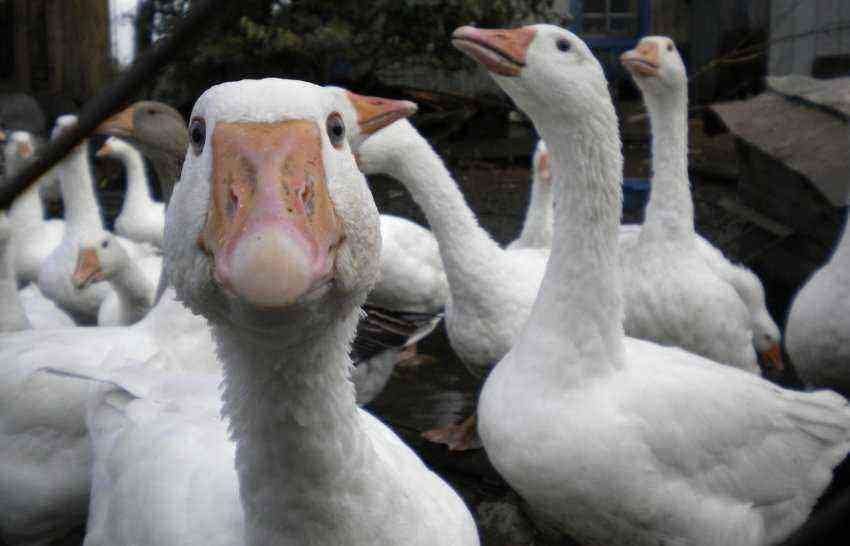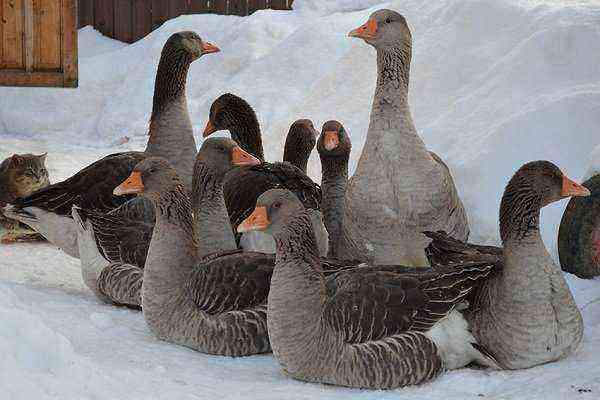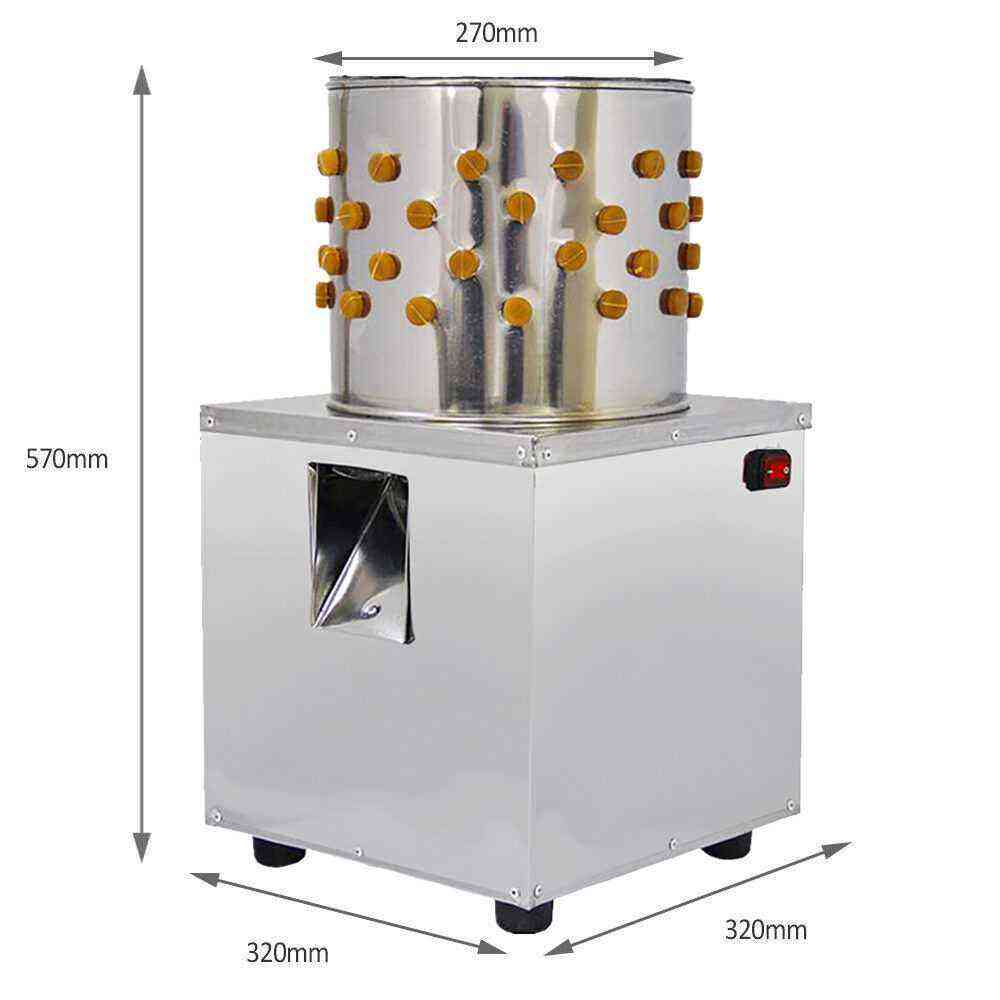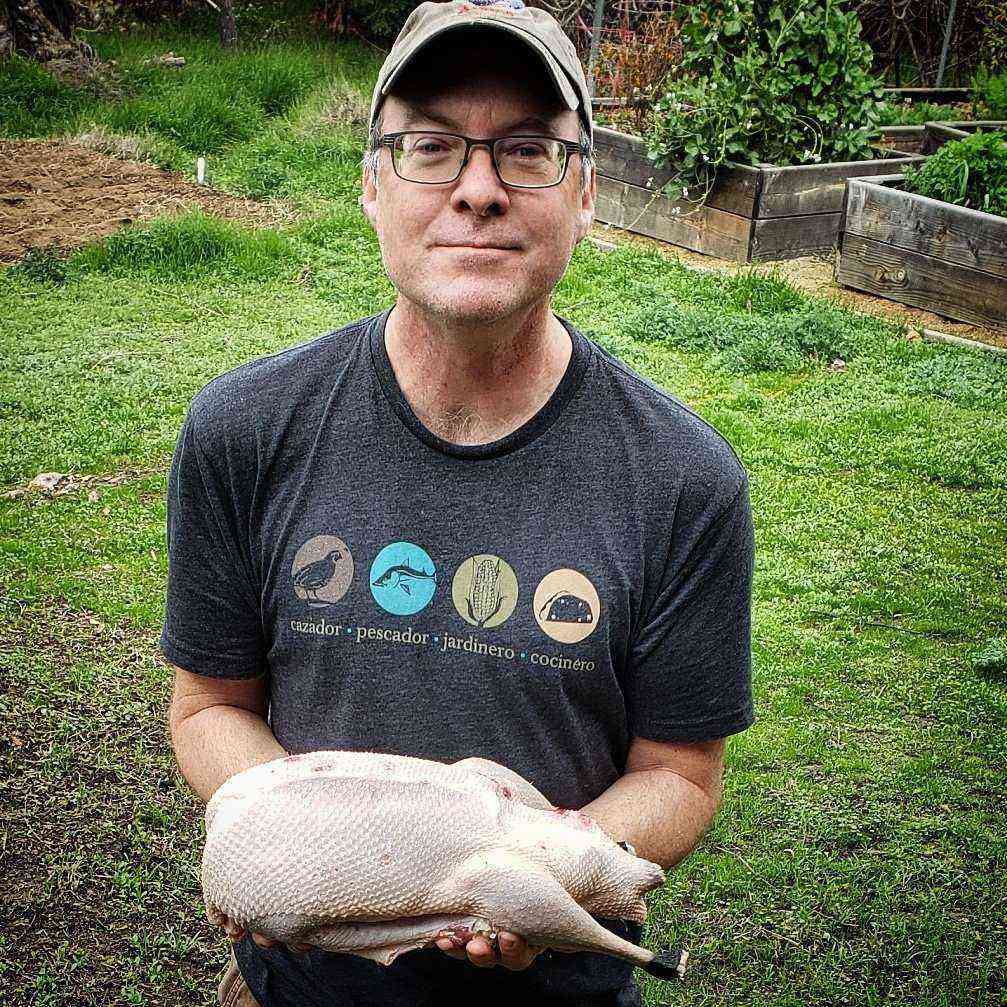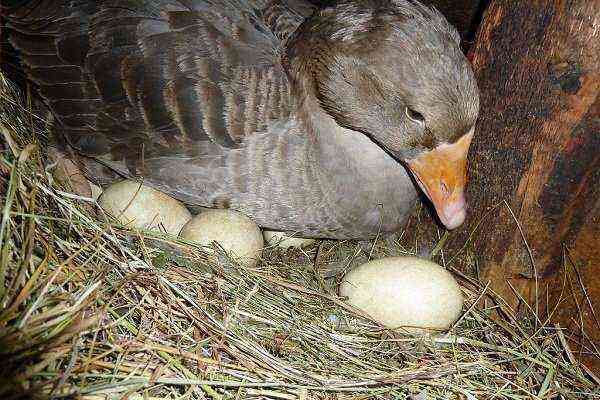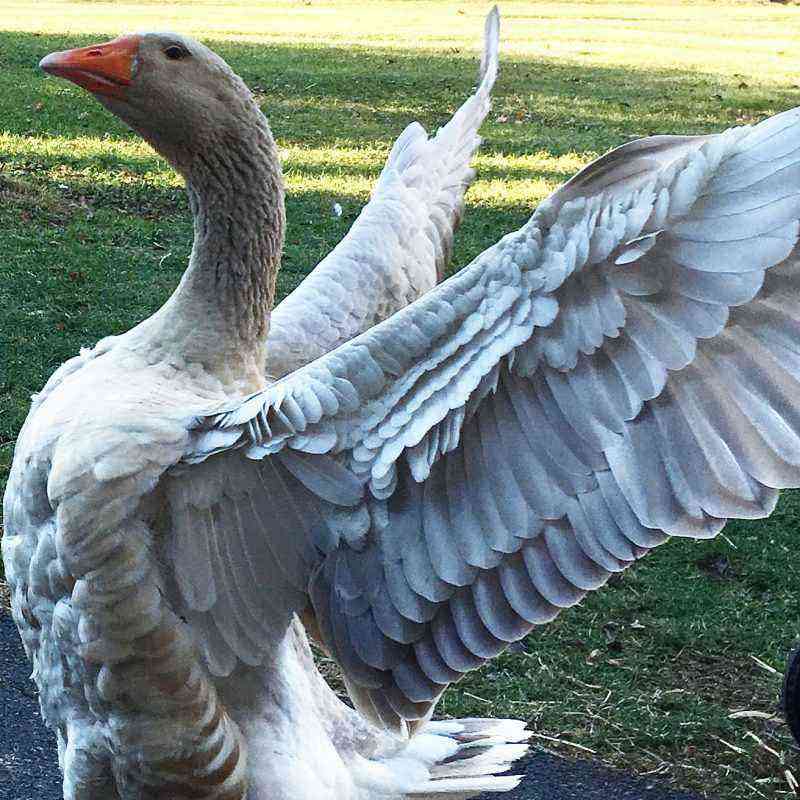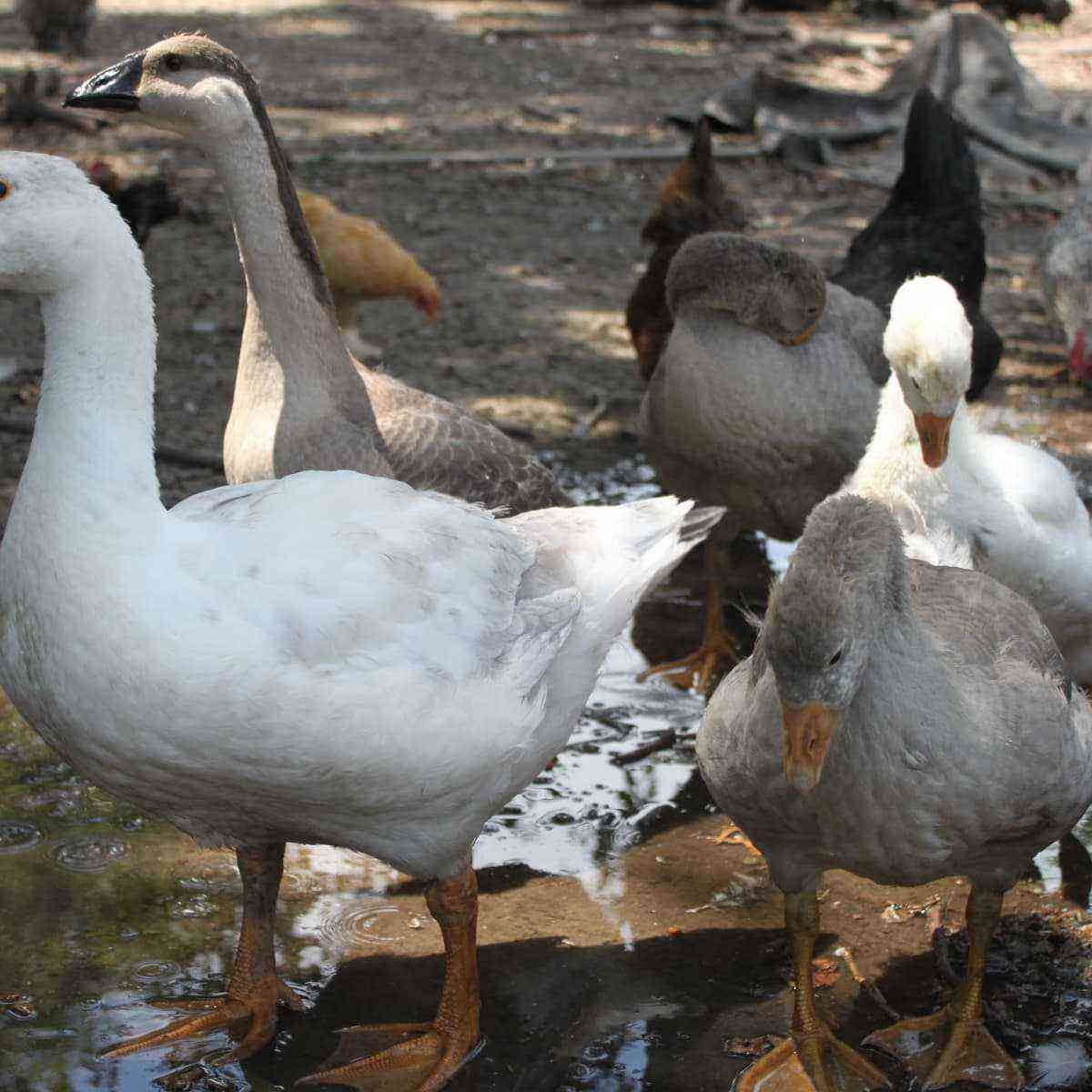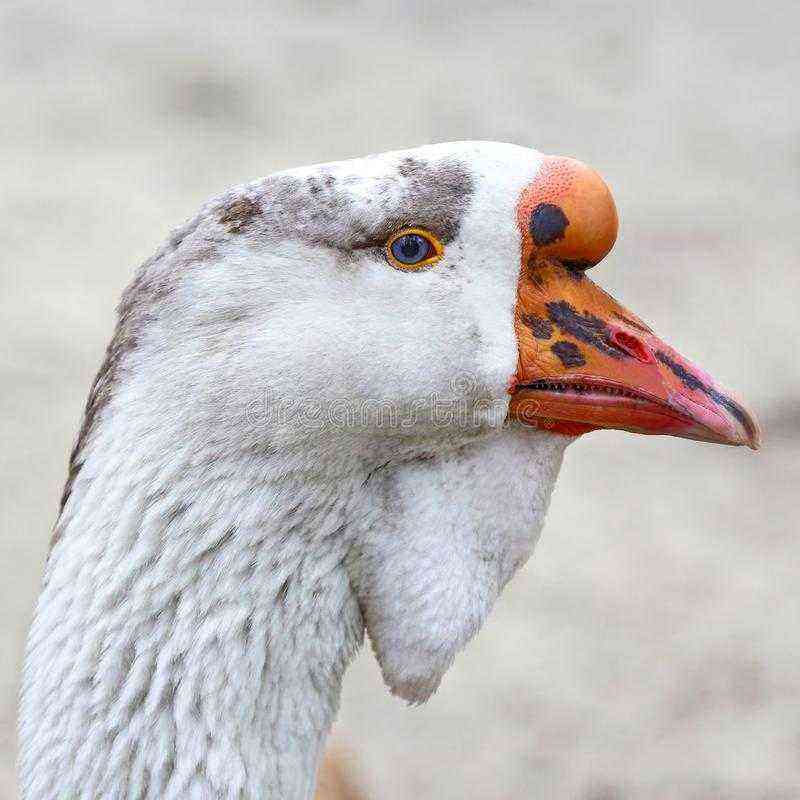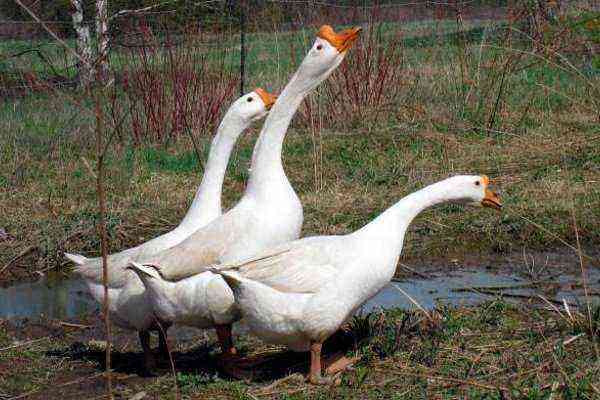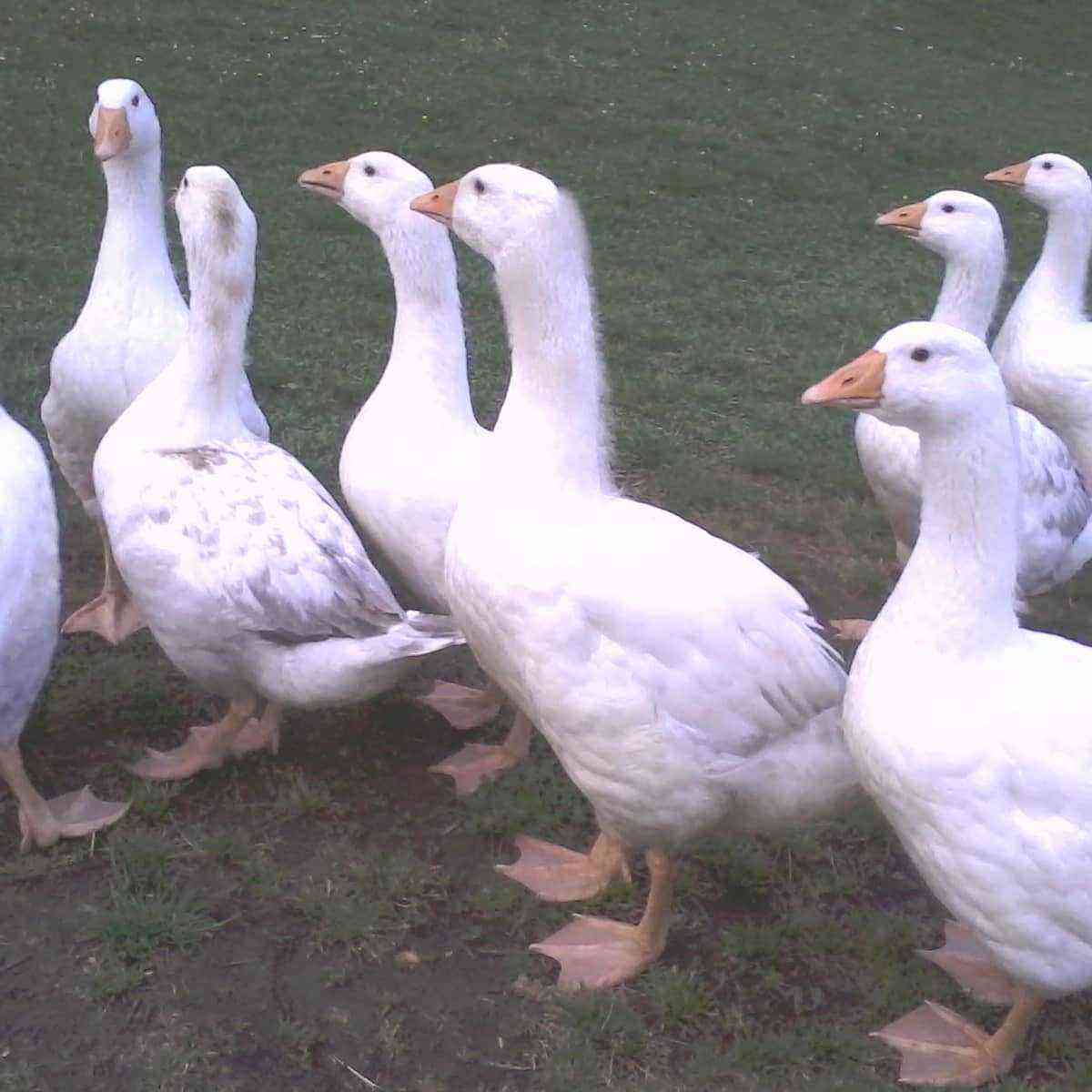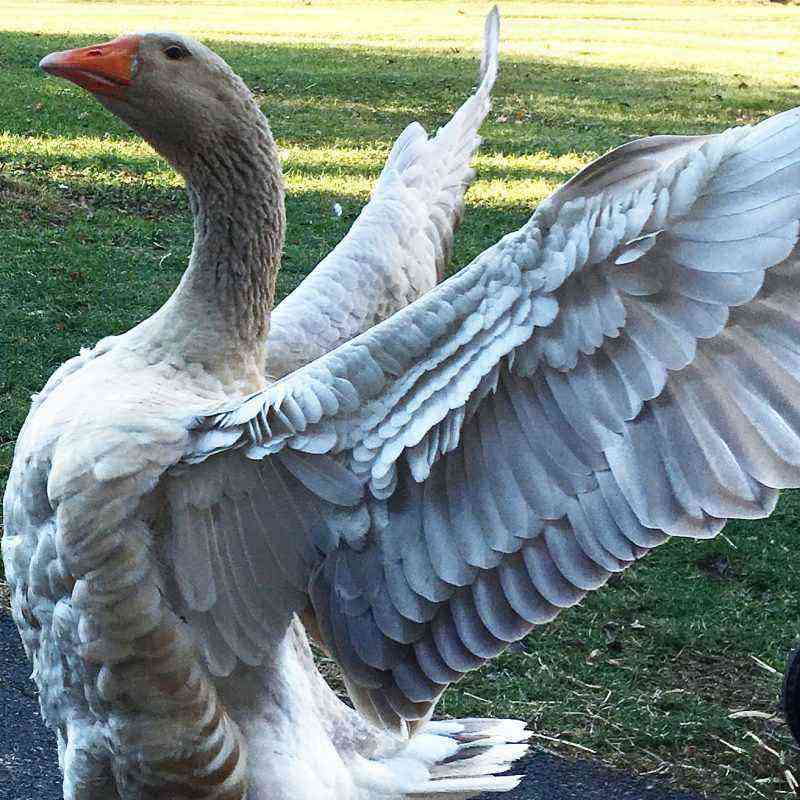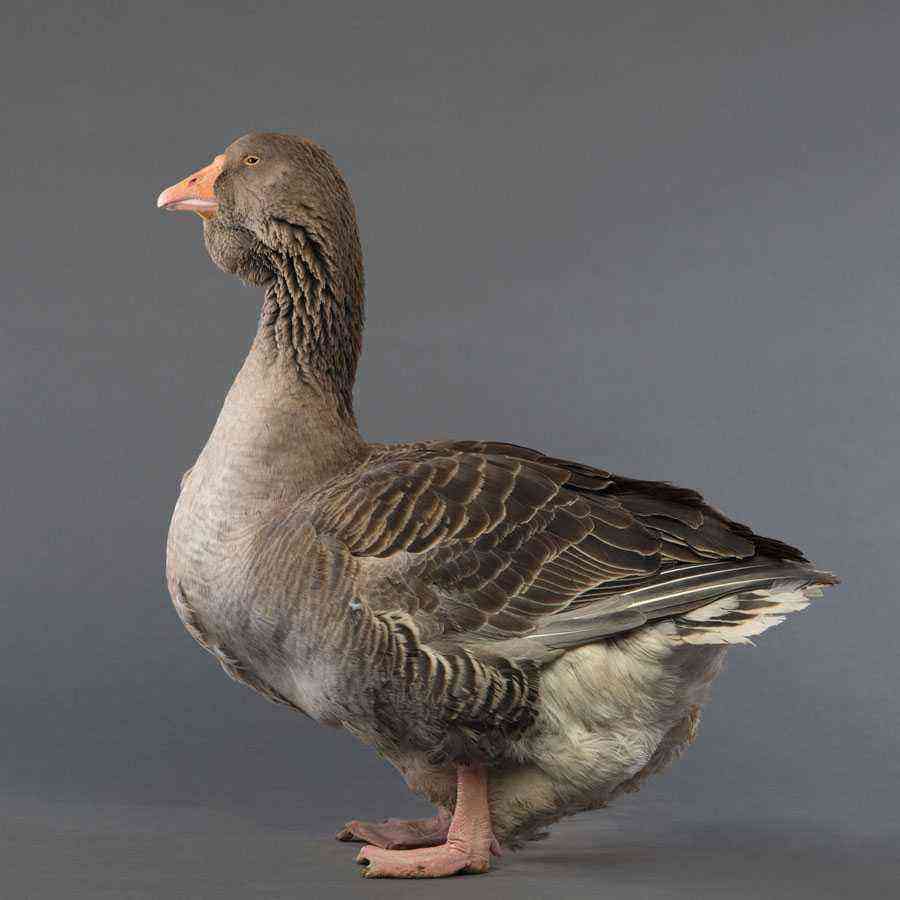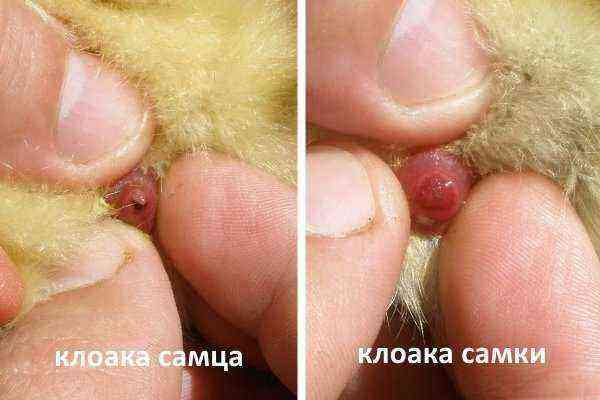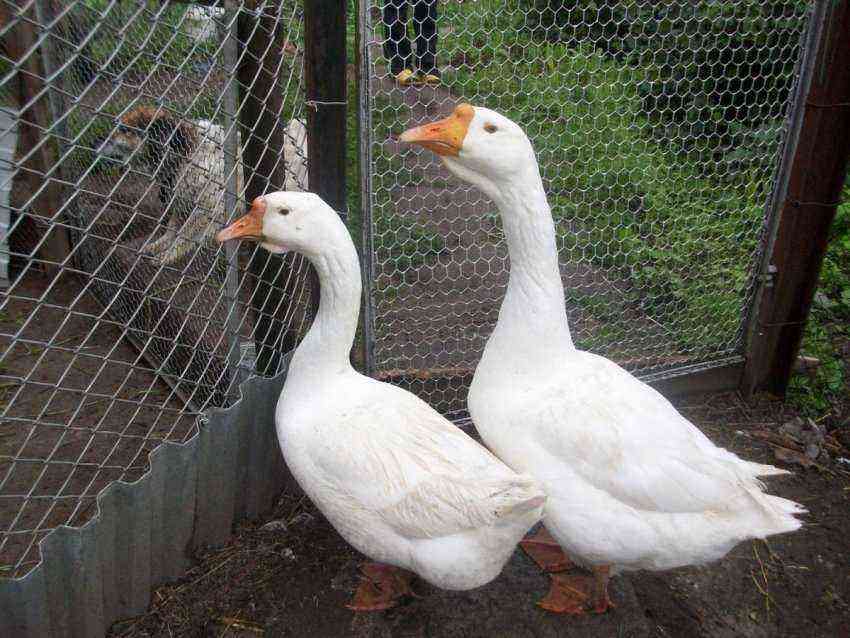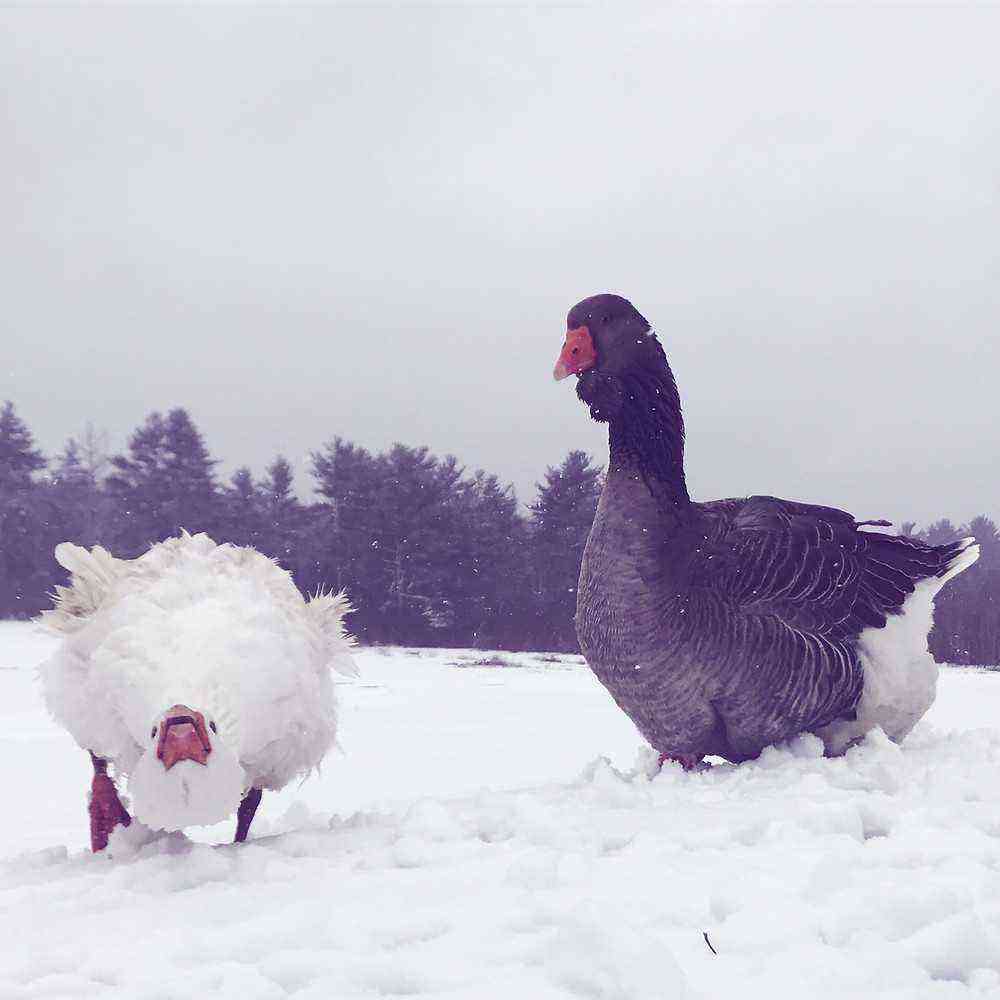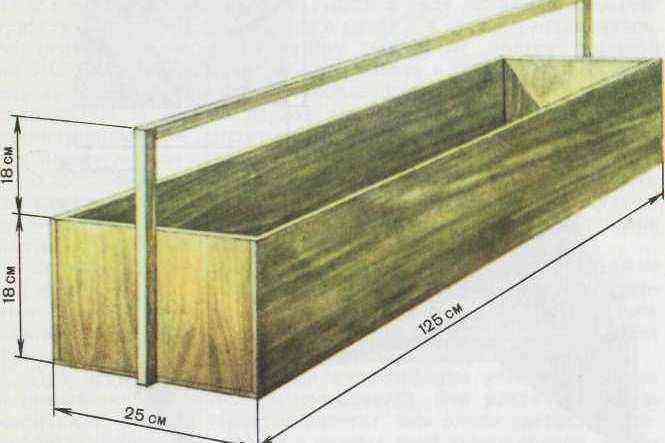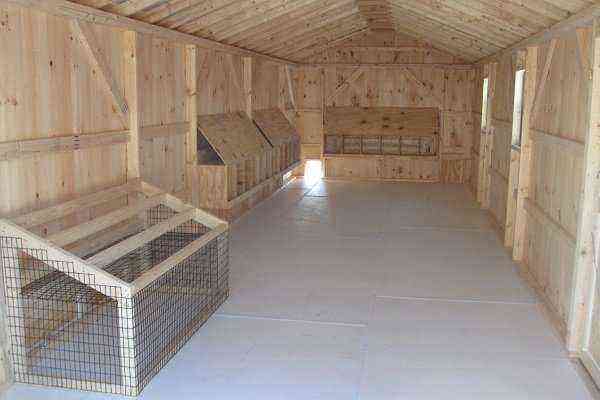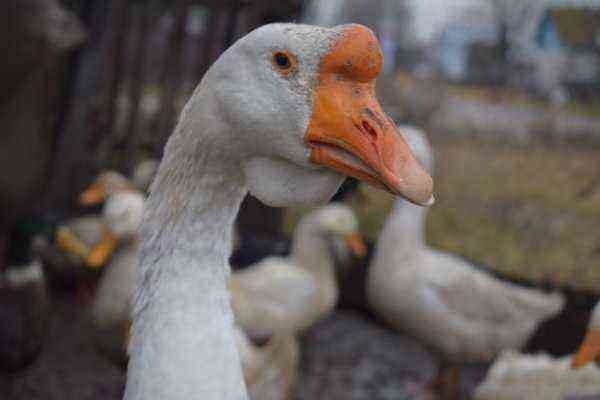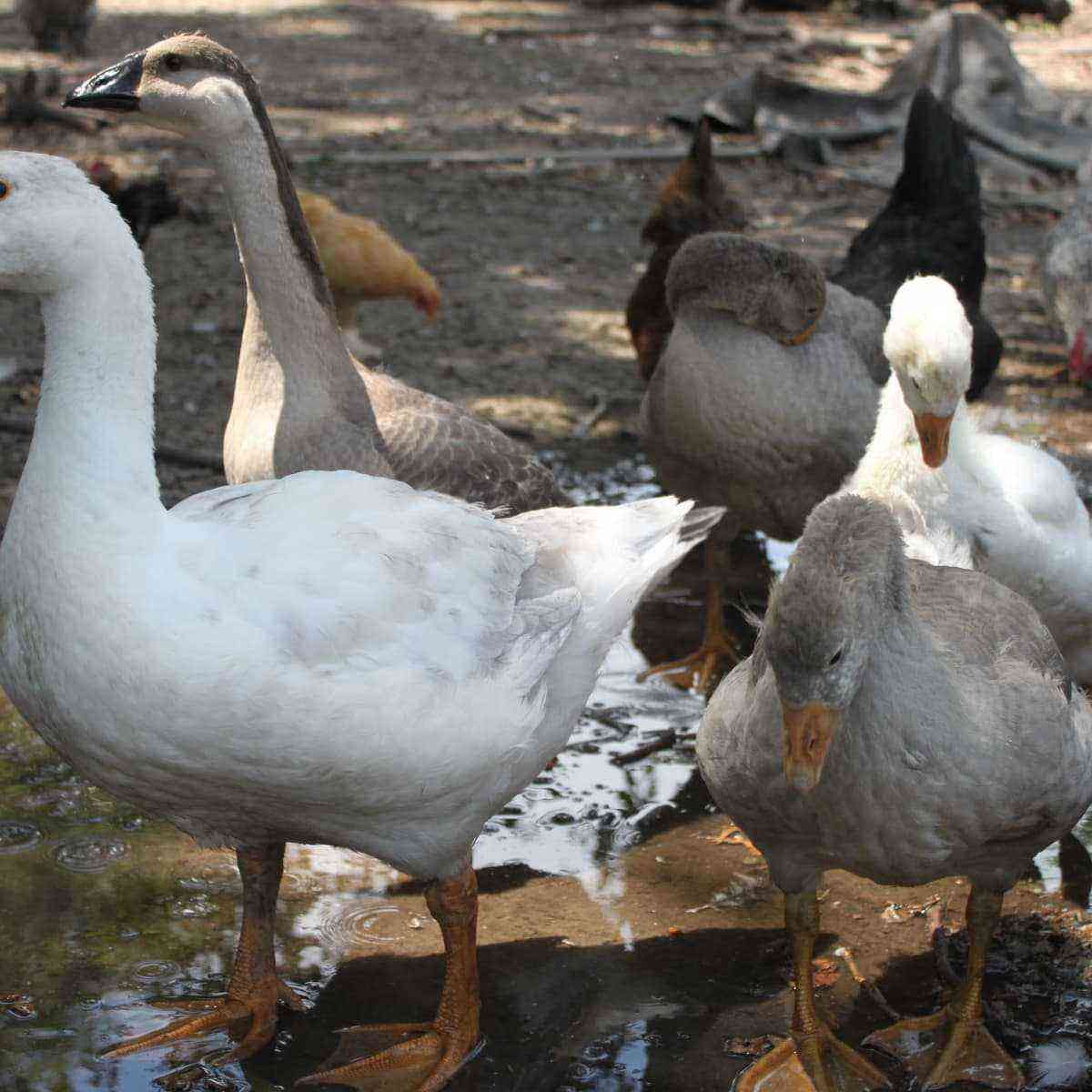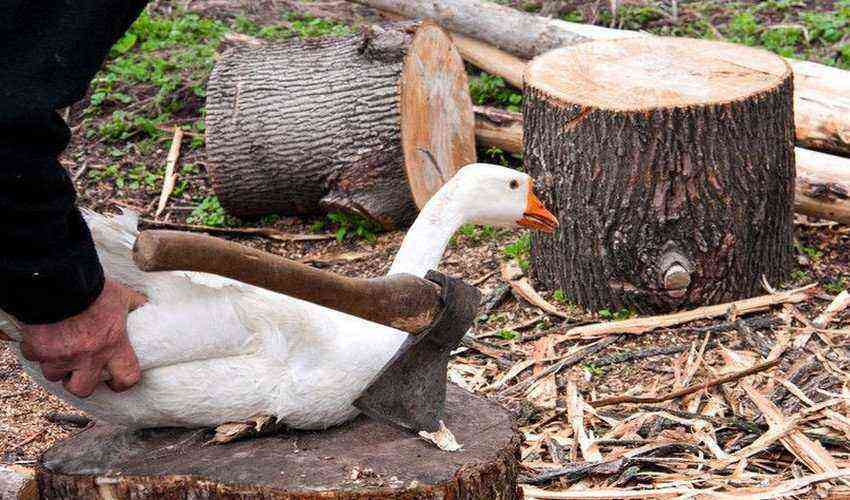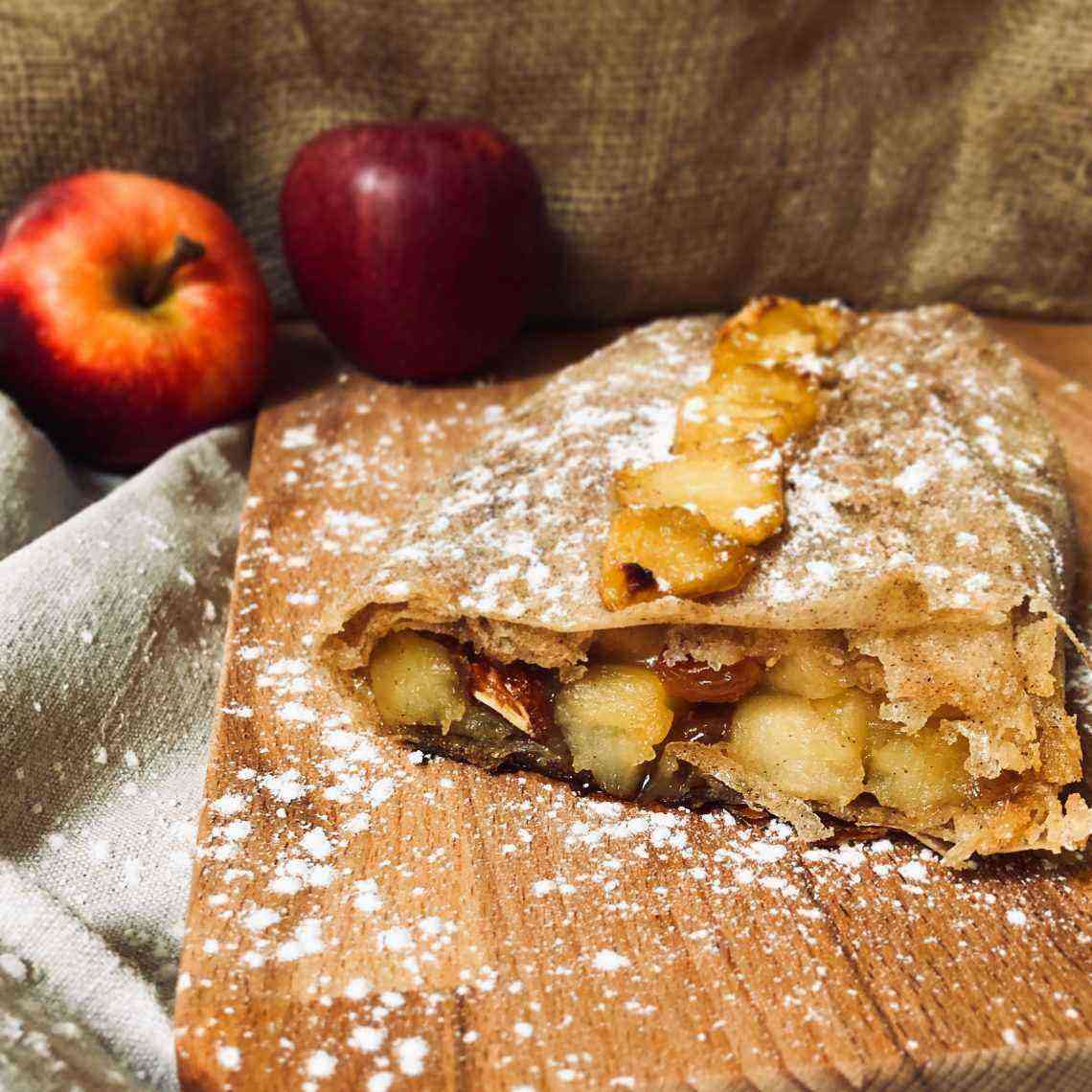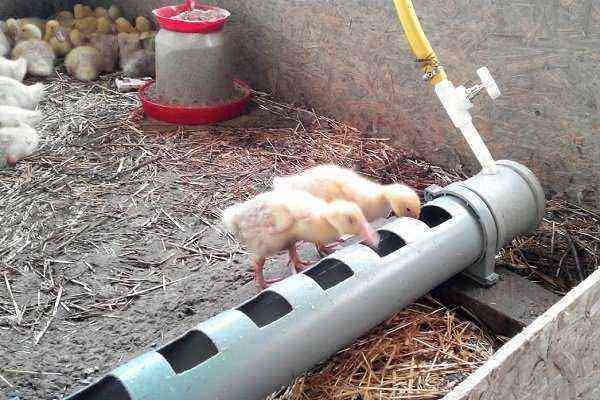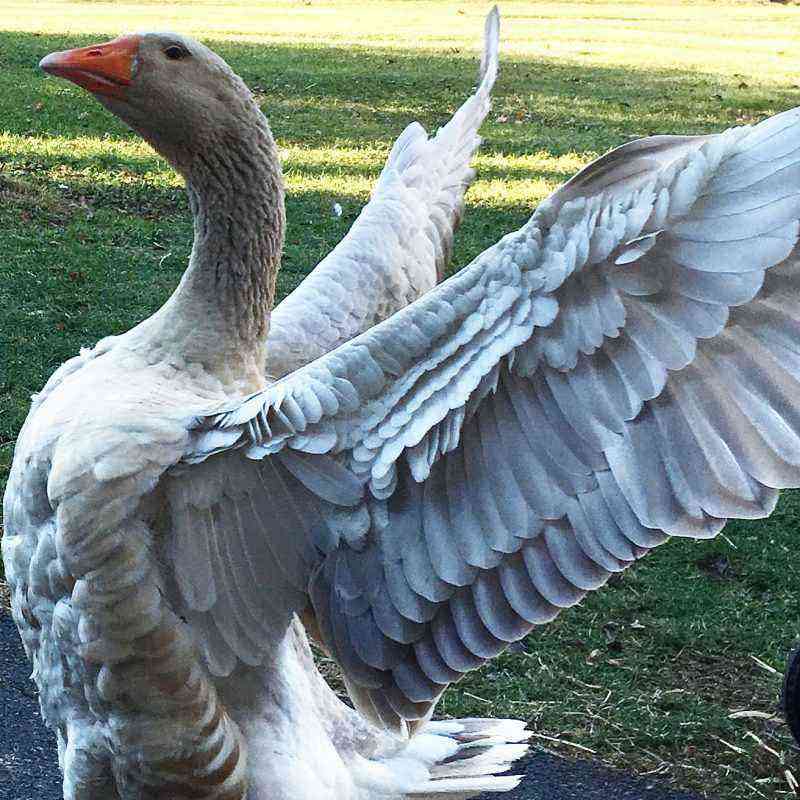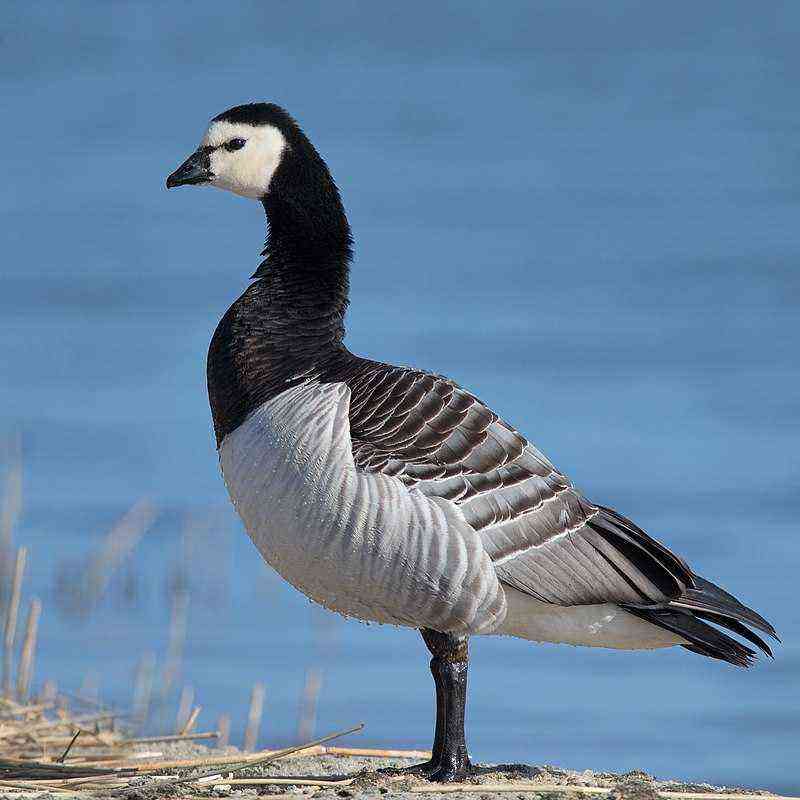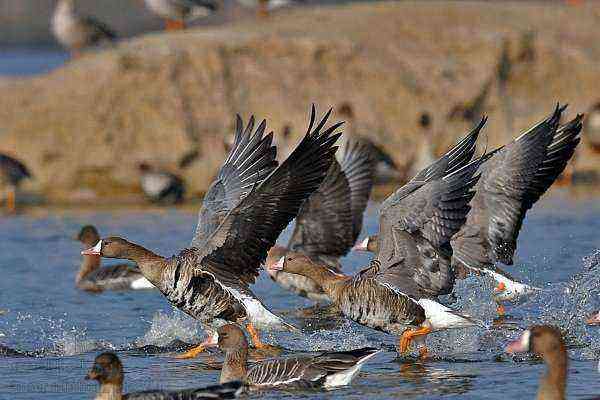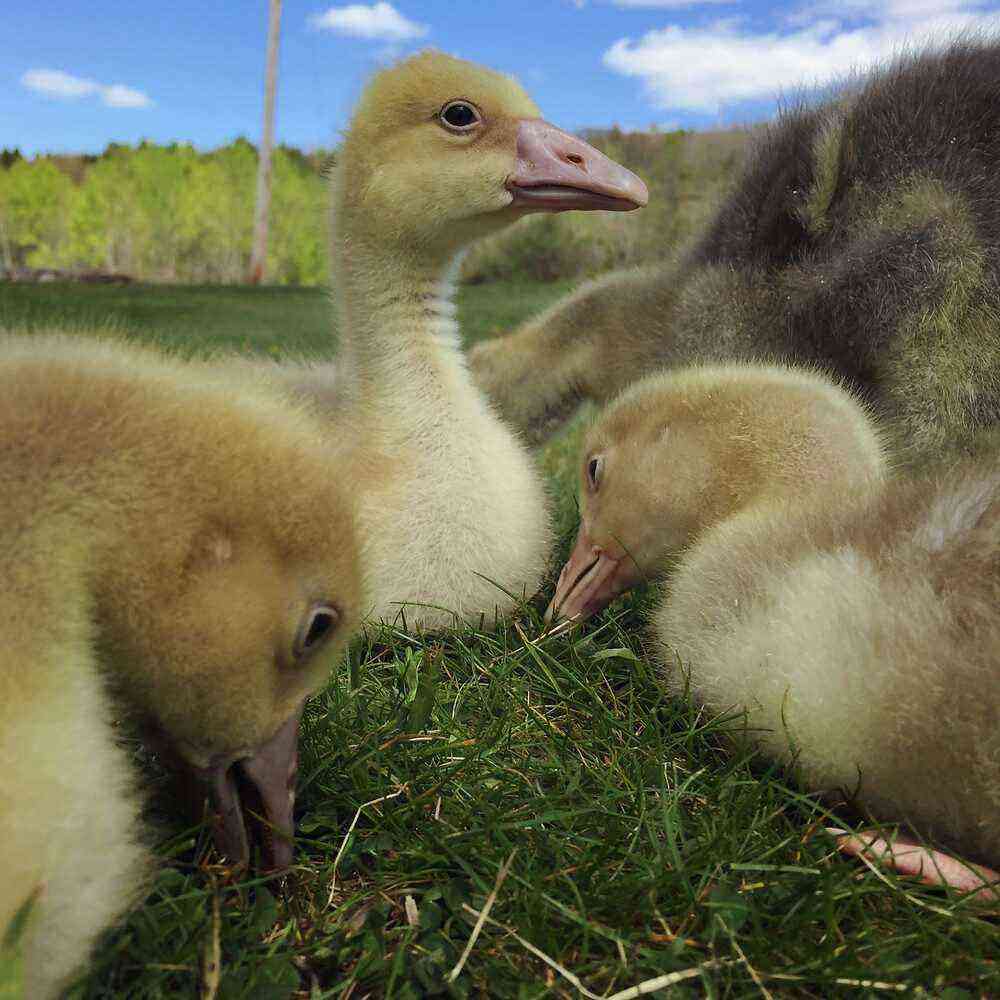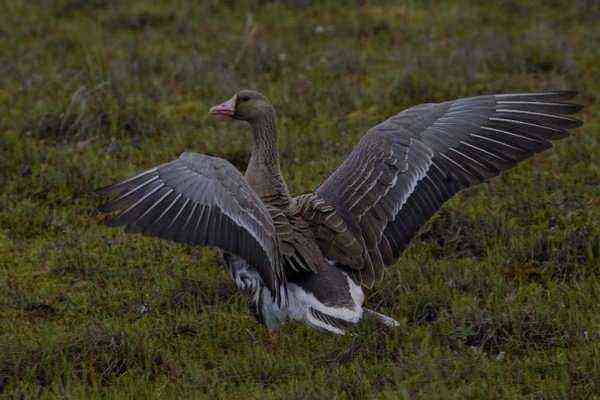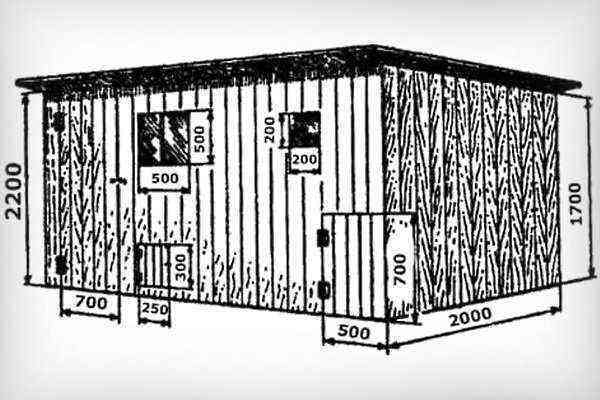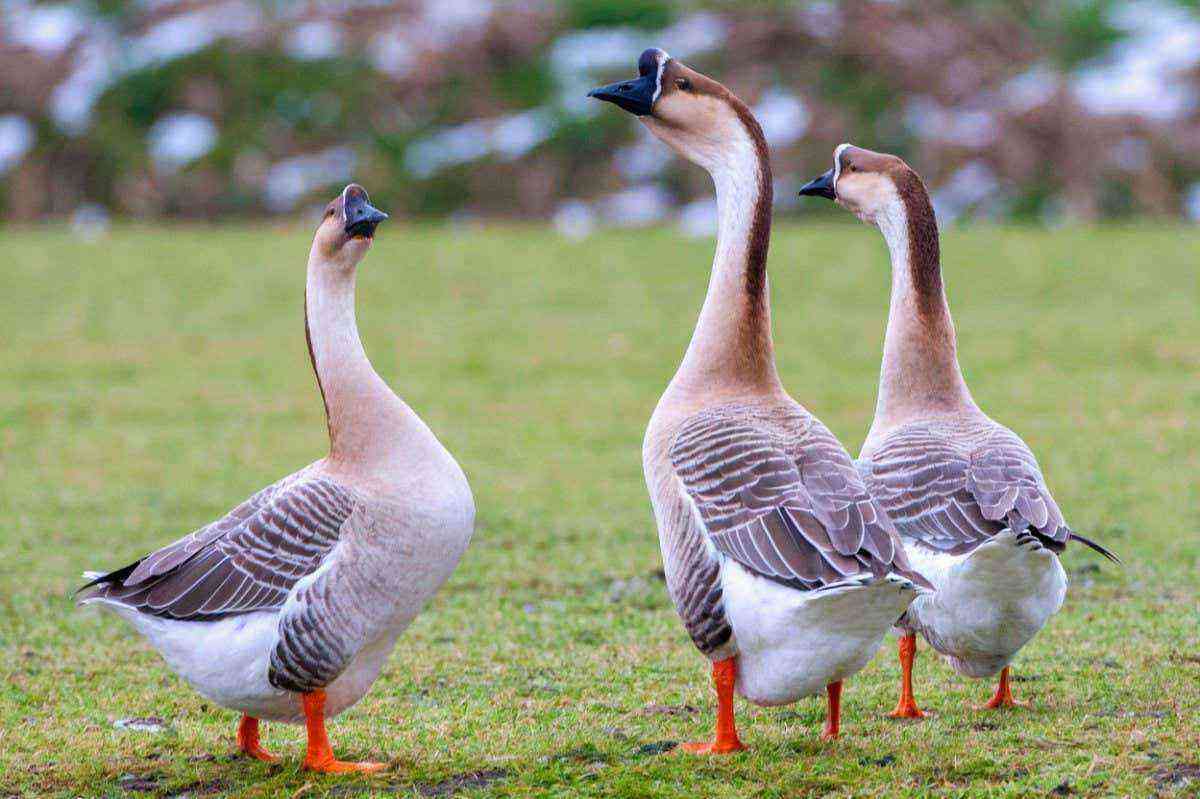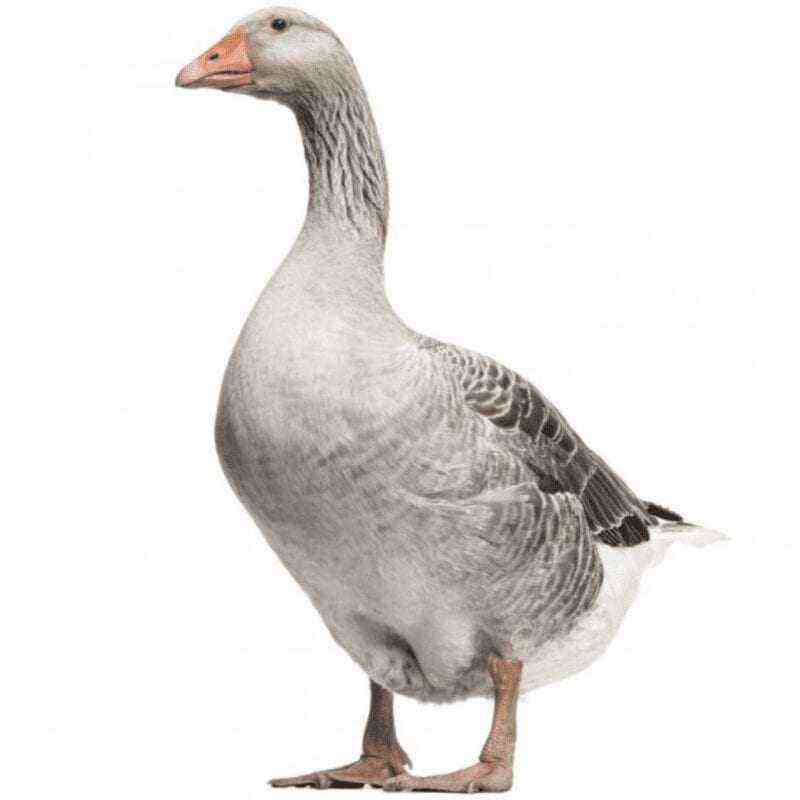By nature, the goose is a waterfowl. Therefore, in order to preserve the health of adults and the rapid growth of chicks, breeders are trying to create living conditions for geese that are close to natural. The absence of water bodies near the pasture is compensated by the construction of artificial ponds and pools.
Why do geese need to swim?
The splashing of birds in the water is a comfortable pastime for birds in hot weather. In addition, swimming has a good effect on the appearance and health of geese.
The importance of the aquatic environment for birds:
- contributes to the best absorption of nutrients;
- plays a significant role in laying eggs;
- in the absence of the opportunity to swim, the daily weight gain is reduced by 30%;
- water contributes to an even distribution of fat throughout the plumage;
- the goose is in active movement, which does not allow him to swim in fat;
- the likelihood of infection with a feather is reduced (the insect harms the feather covering and the skin of geese).
The reservoir plays a special role for birds in dry summers. Geese become lethargic, move little and eat. Males refuse to mate. To make the goose brood feel good, a shallow reservoir of water under the bush is enough.
For goslings, a pond is necessary to familiarize them with natural conditions. In the absence of bathing, fledglings do not develop the instinct to grease feathers. They don’t know how to swim.
Pros and cons of keeping a pond for poultry
An artificial pond on a pasture of geese, in the absence of a natural reservoir, has a huge number of positive aspects. But some shortcomings are present.
Advantages:
- maintaining the health of birds (in addition to protecting against pests, swimming helps to strengthen immunity);
- creation of natural living conditions;
- activation of weight gain (increased humidity around the bath accompanies the growth of lush greenery, attracting insects);
- eliminates the need to purchase drinkers;
- the financial cost of keeping birds is reduced (less purchased feed is required).
In any case, the poultry farmers of the man-made reservoir will face difficulties:
- constant care is required (water quickly becomes dirty);
- in hot weather, water evaporates rapidly (if there is no source nearby, you will have to manually replenish the volume of liquid or build a water delivery system to the tank, and these are additional costs).
What to do if there is no reservoir?
If there is no natural reservoir near the grazing place for geese, it is easy to build a pond yourself. The manufacture of a simple tank without the involvement of special equipment and hiring labor will cost minimal.
In addition to construction, there are other options for building a birdbath. The simplest method is to accommodate large containers.
With a small number of geese on the farm, an old bathroom bowl is suitable. The inconvenience of the design in a high rise. The solution to the problem is the installation of boards as a lift.
It’s easy to give a bathroom a more aesthetic look:
- Measure the dimensions of the bowl. Dig a pit with an “allowance”. Drop a container into it.
- Cover with PVC film. Fill with water.
- Shape the end.
Got a big tire lying around in the garage? It will be an excellent basis for the construction of a small pond:
- Dig a hole with a diagonal slightly larger than the size of the tire. Place the item in the hole.
- Cover with foil. Stone any excess material that protrudes.
- Fill the edges with earth, take it.
- Fill with water.
- Decorate.
An important point is to think over the drain system. The water in the small pool is stagnant – you will have to change it often.
Shrubs should be grown near the reservoir, under which the geese will hide from the bright rays of the sun.
Pond construction
The above methods for creating a bath are for a small number of geese. Such reservoirs are not enough for a large number of birds. Here you have to make an effort and create a full-fledged artificial pond.
Below are some examples of building a “lake” for geese. Before starting, you need to carry out preliminary work.
Determining the location and size of the pond
It is preferable to place a man-made reservoir close to the poultry house – the birds will not need to move away from their place of residence. For construction, an area in the shade of shrubs with soft, loose soil is well suited. Natural excavations (pits) will greatly simplify the work of creating a reservoir.
The second selection criterion is the proximity of a water supply or other source of water. You will also need to consider that you need a gutter.
The third criterion is that the size of the pond should correspond to the number of geese on the farm. If there are a lot of birds, a reservoir of 3 x 2 m will be optimal. The depth is determined at your discretion, but not less than 0,5 m.
What tools and materials to prepare?
Different variations of the pond imply a larger or smaller set of tools and materials.
The main (general) are:
- bayonet and shovel for preparing the pit;
- slate for fencing the perimeter of the pit to exclude the possibility of soil shedding, cement;
- PVC film;
- bricks, sand, gravel, etc.
Step-by-step instructions for building a simple slate pond
A common shape of a reservoir is a square. So it is more convenient to arrange sheets of slate. But it is not forbidden to make round pools.
Algorithm of actions:
- Draw the outline of the reservoir.
- Remove the top layer of earth – the depth of the pit corresponds to the width of the slate. Dig a pit designed for a drain hole (the volume is the same as that of the main one).
- Dig a pit designed for a drain hole (the volume is the same as that of the main one) at some distance from the pond. Make a connecting ditch for the waste pipe (with a slope and a stopcock).
- Align the bottom of the bath, vertically install the slate sheets and fix.
- Lay a film on top of the structure with a margin. Make the sides of the hole even. So the film will hold firmly.
- Lay clay and stones at the bottom. Fill the edges of the film with earth, tamp it down.
- If necessary, make exterior decoration – veneer with stones, pebbles, etc.
The construction of a drain contributes to the renewal of water. If the area does not allow you to make a drain hole, use a pump for pumping.
Step-by-step instructions for building a spacious pond with a cemented base
This design option will last a long time.
Algorithm of actions:
- Mark the construction site. Clean it up.
- Dig a pit 4 m long, 3 m wide and 0,5 m deep. Do not make the bottom even. At one end, it should be higher so that a gentle descent into the water is formed.
- Lay the PVC film in 3 layers, completely covering the hole and capturing the edges.
- Throw broken bricks, stones, fragments of slate, etc., at the bottom.
- Fill with cement mortar.
- Prime the dried layer (to extend the period of use).
- Sprinkle the edges of the film with earth. To reduce the entry of dirt into the water, cement the nearby distance (30 cm – 40 cm) around the reservoir.
Step-by-step instructions for building a large pond
Such pools are built mainly in farms containing more than 300 poultry. Sizes vary. In the example – 6 x 8 m. The reservoir will successfully master the maintenance of a large number of birds.
A drain pit is not suitable for a large pond – it entails additional financial costs. To pump water you will need:
- pump;
- hoses.
Algorithm of actions:
- Dig a multi-level pit.
- Lay the PVC film. Lay gravel, broken brick at the bottom.
- Cement the bottom of the pond.
- Seal the sides: lay the reinforcement; cement.
- Finish the edges of the pond. Fill with water.
Plant the surrounding area with plants:
- northern part – trees;
- in the southern part – low shrub cultures.
Periodically add duckweed to the water to feed the geese.
You can clearly see the construction of the bath for geese in the video:
How to make a house for geese on the water?
Houses on the water are mainly built for ducks, but geese are also not averse to climbing into a shady shelter in hot weather. Installation of the building is possible only in a large pool.
To build a house you will need:
- Tools: screwdriver, screws.
- Materials: pallet (second-hand), cutting boards (plywood is not suitable for construction, it swells in water), beam (framework), roofing felt, slate (remnants), plastic bottle (5 l) – 4 pieces, corner – 4 piece, twine (anchor), brick.
Algorithm of actions:
- Assemble the structure according to the drawing.
- Attach 4 bottles to the edges of the pallet. This is a floating platform.
- Set the house in the middle of the pallet, secure. Leave an edge along the edge of the raft. This is the place where the birds come out of the water.
Considering pond hygiene
Stagnant water in the pond rapidly becomes dirty – birds throw garbage, earth, mold, turbidity, smell appear. This is due to the process of decay of organic matter, so you need to take care of the cleanliness of the pond.
In order for the bird to use the reservoir, it is necessary to regularly drain the water:
- small reservoirs – with a hose, pump (daily);
- in large pools – an aerator pump (every week).
If an unpleasant odor remains even after changing the water, special chlorine-containing products must be added to the liquid. The pungent smell of the product dissipates quickly.
Care of the pond
In addition to regular work to keep the reservoir clean, additional maintenance actions are required. The measures will allow for a long time not to be distracted by the reconstruction of the bath and reduce the likelihood of water pollution.
Care is as follows:
- Control the water level in the bath.
- Keep fluid circulating.
- Clean the water from fallen leaves (growing bushes nearby, trees constantly shed old leaf plates).
- To preserve the purity of water, use plants-oxygenerators that contribute to natural purification, filling it with oxygen.
- In winter, remove the water, thoroughly clean the pit.
- Check the bottom for damage, with the slightest violation of integrity – restore.
- Keep an eye on the adjacent piece of land. Birds can tear the film with their paws. Plants, growing, roots damage the film coating.
An artificial pond is a necessary structure for the healthy growth of geese. There are different types of reservoirs. You can choose the best option for any utility plot of land. And the construction will not take much time and effort. The efforts of the breeder will pay off with tasty, moderately fatty poultry meat.
